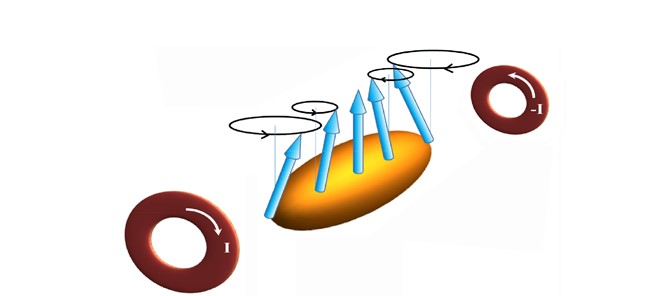
In an ultracold quantum gas, collective interactions among the particles can lead to many forms of unusual behavior, such as superfluidity. Researchers have now observed a new collective phenomenon in a spinor gas—an ultracold atomic cloud that has both magnetic and superfluid properties. Laurent Vernac and colleagues from the University of Paris 13 in Villetaneuse have discovered that a magnetic field can excite a collective spin oscillation in the gas.
The team prepared a football-shaped Bose-Einstein condensate by cooling chromium atoms to 400 nK. They aligned the spins of all the atoms with an external magnetic field whose strength gradually increased along the condensate’s length. They then rotated the spins by 90° using a radio-frequency pulse and observed the atoms’ dynamics. In a homogenous field, the atoms would precess at the same frequency, and their spins would remain parallel. In a spatially varying field, the atoms, in the absence of mutual interactions, would be expected to independently precess at different frequencies—scrambling the parallelism. But these strongly interacting atoms behaved differently. Their spins remained mostly parallel, while oscillating around their initial directions with an amplitude that depended on position.
The team attributes this behavior to the cloud of atoms acting as a “ferrofluid,” a liquid that becomes highly magnetized when subject to a magnetic field. In such a quantum state, strong spin-dependent interactions among the atoms lock in the spin directions, resulting in the collective spin oscillation. These results show that spinor gases can display collective excitations similar to those of solid-state ferromagnets or ferrofluids, even though these gases are typically 10 million times more dilute than their condensed-matter counterparts.

